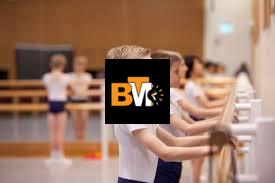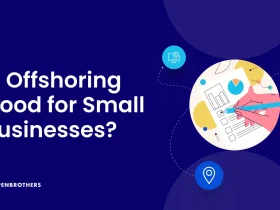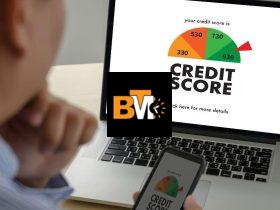The online learning industry has grown into a massive ecosystem of promises. Promises of flexibility, affordability, accessibility, and career advancement. Yet beneath this surge lies a quieter issue that learners are beginning to notice: not every provider is what it claims to be. “Trusted Online Learning” has become more than just a marketing phrase; it represents a standard that only a few platforms genuinely meet. Understanding what earns that trust—and why so many fall short—is vital for students and professionals navigating this digital education landscape.
At first glance, the markers of a reliable platform appear simple: legitimate accreditation, transparent pricing, and responsive support. But in practice, trust is built through a network of signals that go far deeper than administrative checkboxes. It’s not enough for a website to have certificates and testimonials. The modern learner, now more discerning and digitally aware, looks for evidence of integrity in the design, content, and operation of the platform itself.
The first layer of trust is educational transparency. Trusted platforms don’t hide behind vague promises of “recognized qualifications” or “industry-leading content.” They provide clarity about who validates their courses, what students can expect to learn, and how assessment works. If a learner has to dig through pages of marketing fluff just to find whether a course is officially recognized, that’s a red flag. True credibility comes from openness—showing not only what the program includes but also what it doesn’t.
A second measure of reliability lies in instructional integrity. Some online platforms rely heavily on pre-recorded, recycled material that has barely been updated in years. Others, however, take the time to refresh course content, ensuring it reflects current industry standards. A truly trusted platform values relevance as much as convenience. When the skills being taught have real-world application and are grounded in up-to-date information, learners sense the difference.
Support also plays an understated but powerful role in building trust. Many learners assume online education means navigating the process entirely alone. However, trusted providers understand that digital flexibility doesn’t mean emotional detachment. Clear communication channels, timely responses, and the presence of academic support—even if asynchronous—signal that the provider values its students beyond the transaction. It is this sense of being supported that transforms a platform from a service provider into a learning partner.
Another factor shaping the meaning of trust in digital education is data protection. Learners today share personal information, payment details, and even behavioral data with their providers. In the age of AI analytics and online tracking, how a company manages that information matters immensely. A platform that prioritizes privacy, complies with data protection regulations, and openly communicates its policies earns far more credibility than one that simply hides behind a generic “terms and conditions” link. Trust isn’t built on convenience—it’s built on consent and clarity.
Then there’s the question of outcomes. Online learning, in theory, exists to create opportunity: better careers, new skills, or personal growth. But some providers still measure success by enrolment numbers, not learner results. Trusted Online Learning platforms focus instead on the aftereffects of education—what learners actually achieve once the course ends. Whether it’s helping them transition into new roles, pursue further study, or build tangible skills, these outcomes demonstrate that the platform’s promises extend beyond the checkout page.
The issue of accessibility also reveals much about trustworthiness. The internet was meant to democratize education, yet not all digital classrooms are equally open. Some courses are locked behind aggressive upselling models, where essential modules or certifications are hidden behind additional fees. Others design systems that assume stable internet access or expensive devices, effectively excluding a portion of the audience. A platform that truly values trust ensures its design considers inclusivity, affordability, and accessibility—not as marketing tools, but as core principles.
Trust also involves respecting a learner’s autonomy. Many people pursue online learning precisely because it allows them to set their own pace and manage their own time. When a platform bombards users with excessive reminders, manipulative scarcity tactics, or forced auto-enrolment into new courses, it crosses a psychological line. Education should empower, not pressure. The most credible providers balance motivation with respect for the learner’s independence, allowing them to take ownership of their progress.
Beyond structural features, trust can also be recognized in tone and communication. The way a provider speaks to its learners says as much as what it offers. Institutions that overpromise or rely on exaggerated claims tend to erode confidence quickly. In contrast, trusted educators use straightforward language. They acknowledge the challenges of self-paced study, recognize the discipline required, and never pretend that online learning is effortless. By setting realistic expectations, they create a relationship rooted in honesty rather than hype.
It’s also worth examining how trust evolves over time. The internet moves quickly, and reputations can shift in months. Platforms that invest consistently in student feedback loops—actively listening to what learners want and adjusting accordingly—tend to sustain trust in the long run. Reviews and testimonials may attract attention, but responsiveness to criticism maintains loyalty. When a learner sees their suggestions reflected in future updates, it reinforces that the platform is genuinely learner-centric.
Another emerging component of trust involves adaptability. Technology in education is advancing rapidly, from AI tutors to immersive virtual classrooms. Yet not every innovation deserves immediate adoption. A trusted platform doesn’t chase trends for the sake of appearing modern. Instead, it evaluates each new tool based on whether it enhances learning quality or accessibility. In other words, credibility lies in discernment—the ability to prioritize substance over novelty.
Cultural sensitivity also contributes to the sense of reliability in global online education. As learners come from increasingly diverse backgrounds, the materials and examples used within courses must reflect that diversity. Programs that unconsciously favor one regional or cultural lens can alienate large segments of their audience. Trustworthy institutions take care to design inclusive curricula that recognize varied perspectives and learning styles. They understand that “global education” must mean more than just international marketing.
In some cases, the most trusted platforms aren’t the ones that advertise the loudest, but those that allow their work to speak quietly through consistency. Learners who return for multiple courses or recommend a platform to peers do so not because of promotions, but because of sustained reliability. That’s the true measure of trust: repeated, positive experience over time.
When the conversation turns to Trusted Online Learning, it’s important to think beyond surface-level assurances. Trust is not a single feature, nor can it be purchased through branding or partnerships. It’s the accumulation of many small, ethical, and thoughtful decisions that shape how a learner feels at every stage—from the first click to the final assessment. It’s about earning belief, not demanding it.
As online education continues to expand, trust will become its most valuable currency. The platforms that last won’t necessarily be the flashiest or the cheapest, but those that embody authenticity, clarity, and respect. In an age where digital interactions dominate, that human element of credibility may be the rarest and most powerful advantage of all.







Leave a Reply